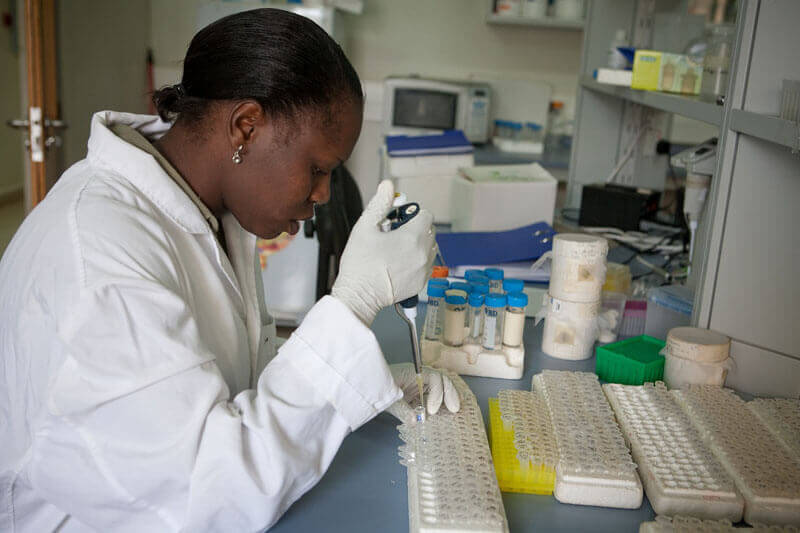Kaitlin ChristensonGHTC
Kaitlin Christenson is director of GHTC.
This post originally appeared on the ONE blog.
As the International AIDS Conference descends on DC later this month — the first time this conference has been held in the United States in over 20 years — there couldn’t be a better time to reflect on the scientific gains that have emerged over the past several months, and how a wide range of dedicated Americans are pushing this HIV and AIDS research forward.
Just last month, one of GHTC’s member organizations, the Maryland-based International Partnership for Microbicides, launched a new study to determine whether a monthly antiretroviral (ARV)-containing vaginal ring can safely and effectively help prevent HIV infection in women. Advocates have long called for more female-initiated HIV prevention options, like a microbicide gel or ring. If proven to be efficacious, the ring would provide women with a discreet and easy-to-use form of protection and could provide new power by putting HIV prevention in the hands of women.
The US government has historically played a major role in pushing forward a research and development (R&D) agenda for HIV and AIDS, and the past few months are no exception. For example, the US Food and Drug Administration (FDA) has been particularly active in reviewing new HIV and AIDS tools that have successfully emerged from the research pipeline.

Earlier this summer, an FDA advisory council recommended that the agency approve the use of the ARV Truvada, made by Gilead Sciences, by certain high-risk, HIV-negative people as a preventive measure against HIV in a method known as pre-exposure prophylaxis (PrEP).
Although the FDA will not make a final decision until mid-September, an approval by the FDA would signify a new way forward in preventing HIV infection in the US and across the globe.
And just a few days ago, the first-ever take home HIV test was approved by the FDA. Although some questions remain around the implementation of the home test, it is an important step forward in providing greater testing access to the many individuals in the US who are unaware of their HIV status.
In addition to the FDA, a host of US federal agencies have long been committed to advancing HIV and AIDS R&D. A new report released earlier this year by the GHTC and Policy Cures illustrates the impact of US government support for new HIV tools, like an HIV vaccine and the woman’s condom. Both the woman’s condom and many HIV vaccine candidates have been developed in partnerships with the US government alongside philanthropic organizations and industry.
Without the critical support from the US government and partners around the world, we would not be as close to creating these and other breakthrough technologies in the fight against HIV and AIDS. For instance, new modeling data released by the New York-based International AIDS Vaccine Initiative shows that a safe, preventive HIV vaccine that is accessible and affordable can help us end the AIDS pandemic.
IAVI’s data shows that even a 50 percent effective HIV vaccine could prevent over five million new HIV infections over a decade, once introduced to a segment of the population in low- and middle-income countries.
This is a critical moment in the fight against AIDS, and the first International AIDS Conference to be held in the US in more than two decades provides a tremendous opportunity for US policymakers to recommit the US government to advancing new tools for HIV prevention, diagnosis, and treatment. It’s my hope that US policymakers -– both members of Congress, particularly as they continue to move forward with the annual appropriations process, and the Administration — listen to the thousands of researchers, advocates, people living with HIV, and others who will be calling for new tools to help curb and eventually end this epidemic at the International AIDS Conference later this month.
Kaitlin Christenson is the GHTC's coalition director.